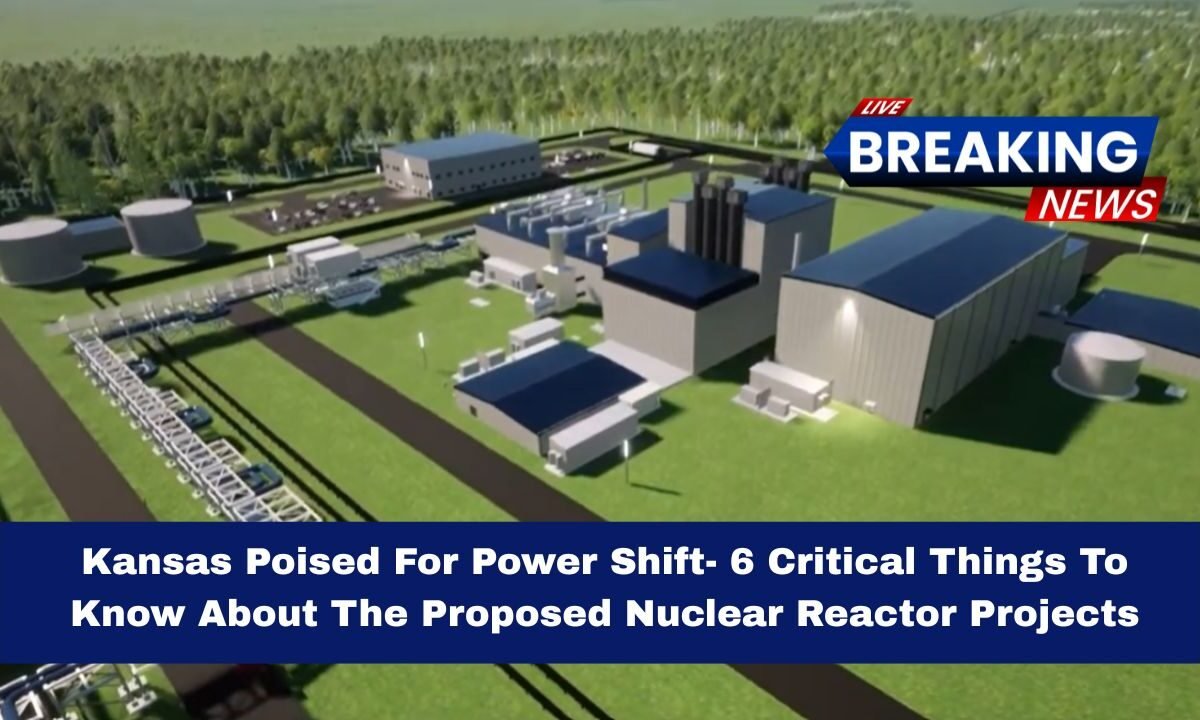In the heart of the United States, the state of Kansas is entering an electrifying chapter in energy history. Two companies are putting forward very different — yet ambitious — plans to build nuclear reactors in the Sunflower State.
\Below are six key facts you need to understand about these proposals and what they could mean for energy in Kansas and beyond.
Two Very Different Visions, One State
The proposals come from two distinct companies: one aims for a large utility-scale plant, and the other targets smaller, underground units. Company A is seeking to partner with the local utility and state agencies to build an advanced nuclear plant that can supply grid-scale power.
Company B is pursuing a novel concept of placing very small reactors deep underground, primarily to power data centres and industries with heavy electricity demand.
The Utility-Scale Plant Strategy
This proposal centres on building a next-generation reactor using advanced technology. It features a design that uses liquid sodium instead of water as the coolant, which allows for higher operating temperatures and different safety approaches compared with traditional designs.
It also includes an integrated energy storage system, enabling the plant to shift output when demand peaks.
The company has formally signed a memorandum of understanding (MOU) with the main local utility and the state economic development agency to evaluate potential sites in Kansas.
They are looking for regions with stable geology, proximity to transmission lines, workforce availability and community support.
The Underground Micro-Reactor Concept
The second proposal takes a radically different path: placing small modular reactors (SMRs) one mile underground in narrow boreholes.
The motivation: data centres and industries such as artificial intelligence need large amounts of reliable power, and the company argues that putting reactors deep underground provides natural shielding and safety advantages.
The company has identified Kansas — along with Utah and Texas — as one of its initial target states. They have signed letters of intent (LOIs) with partners, although specific site locations and partner identities for the Kansas project remain undisclosed.
Why Kansas Is Favoured
Kansas already hosts one major nuclear facility, which gives existing workforce, regulatory and infrastructure familiarity.
The state’s utility is open to expanding into advanced nuclear, and the economic development agency is supportive of “all-of-the-above” energy strategies.
The region has favourable transmission access and some sites that meet geological and infrastructure criteria. For the utility-scale project, the likely service territory lies in eastern or central Kansas.
For the underground reactor concept, the state is one of the first three choices. The combination of state commitment, utility backing and technical viability makes Kansas an attractive destination.
Benefits & Challenges at a Glance
| Item | Details |
|---|---|
| Benefits | • Clean, low-emission power to support industry and growth. • Advanced designs promise improved safety and flexibility (e.g., reactor with storage; underground SMRs). • Could attract investment in tech/data centres and future manufacturing. |
| Challenges | • Licensing and regulatory hurdles for new reactor types. • High initial costs and long-term financing risk. • Public acceptance and community engagement are critical. • Waste management and fuel supply still pose issues. |
| Timeframe | Both projects are in early evaluation stages (site studies, MOUs/LOIs). Firm commitments, construction and operation are likely years away. |
| Target Customers | For utility-scale: general grid/utility customers. For underground: data centres, heavy-demand industrial users requiring dedicated power. |
What Comes Next & Timeline
The next steps include detailed site selection studies, community engagement processes, and the regulatory approval pathway. For the utility-scale design, the MOU triggers evaluations of potential sites and technical feasibility.
For the underground reactor concept, the LOIs will evolve into definitive agreements and site planning. Each project still needs to secure construction financing, regulatory licences, and finalise infrastructure.
If everything aligns, a specific location announcement could happen in the next 12-24 months, but full operation likely lies several years ahead.
Kansas could soon become a national hotspot for advanced nuclear energy. With one company targeting a large, flexible reactor with storage and another pioneering mile-deep SMRs for high-demand industries, the state has two bold paths ahead.
The prospects are exciting: cleaner power, new jobs, tech investment. But there are significant hurdles too — cost, regulation, and public trust.
If all goes well, Kansas might not just get another reactor — it could help redefine how nuclear power is done in the 21st century.



